The Philips VG-8020 MSX is an 8-bit home computer produced by Philips, a Dutch company, in 1984. The Philips VG8020 was also marketed under the brand name Phonola: Phonola VG-8020. It is the successor to the Philips VG-8000 and Philips VG-8010.

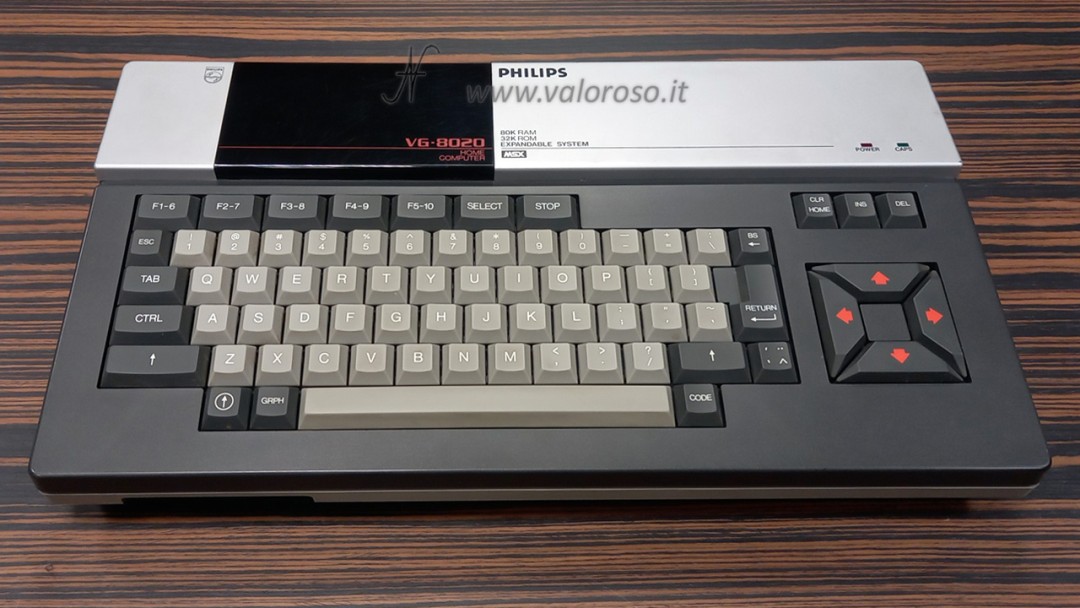
MSX (Machines with Software eXchangeability) is a standard developed in Japan by Kazuhiko Nishi. The intent was to obtain computers compatible with each other, even if built by different manufacturers.
The Philips VG8020 is a computer that complies with the MSX1 standard, and is based on the Zilog Z80A processor.
In my collection there are two Philips VG 8020 computers:
- Philips VG-8020/00
- Philips VG-8020/40
They are several revisions of the same vintage computer model. Both I bought at a good price.

The first MSX I bought is the VG-8020/40: I bought it on eBay at the end of 2021. The second is the Philips VG-8020/00, purchased at the end of 2022: I went to collect it in person, since the seller lives not far from me. The Philips VG8020/00 is boxed and the batch also includes manuals and some magazines.
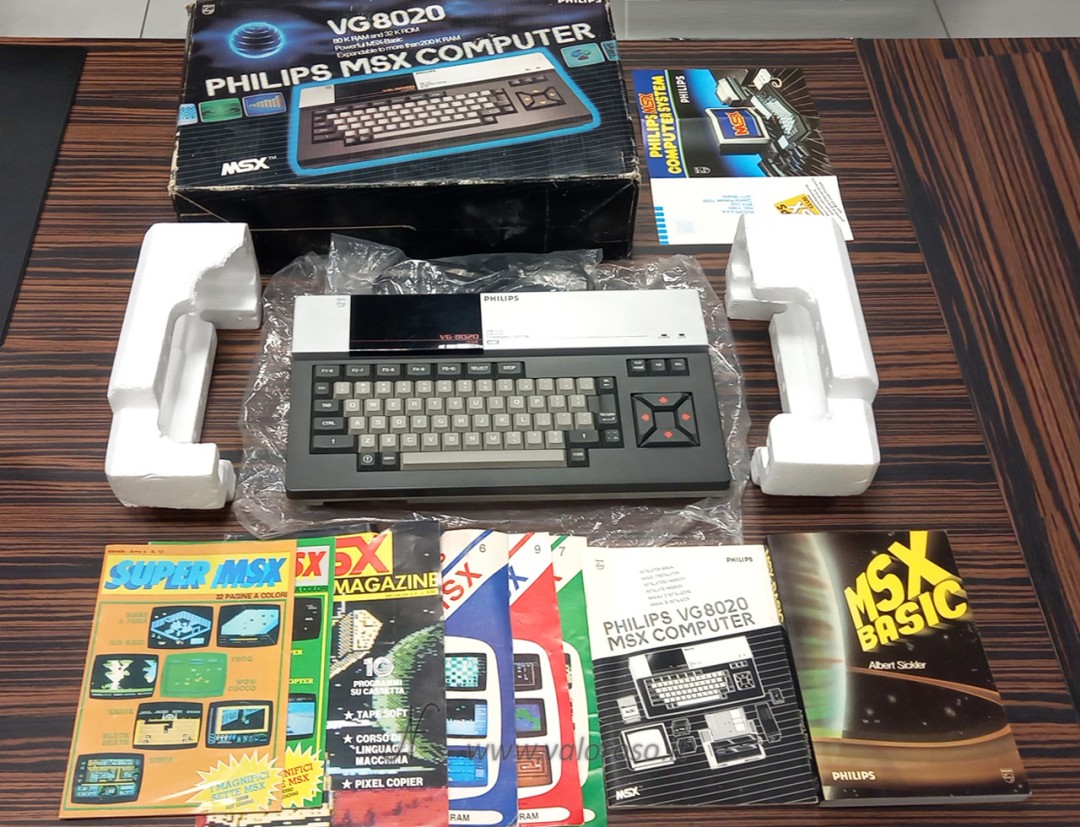
Philips VG-8020 MSX computer startup screen
The Philips VG8020 computer starts with two consecutive screens. The first indicates the MSX standard version 1.0 of 1983.
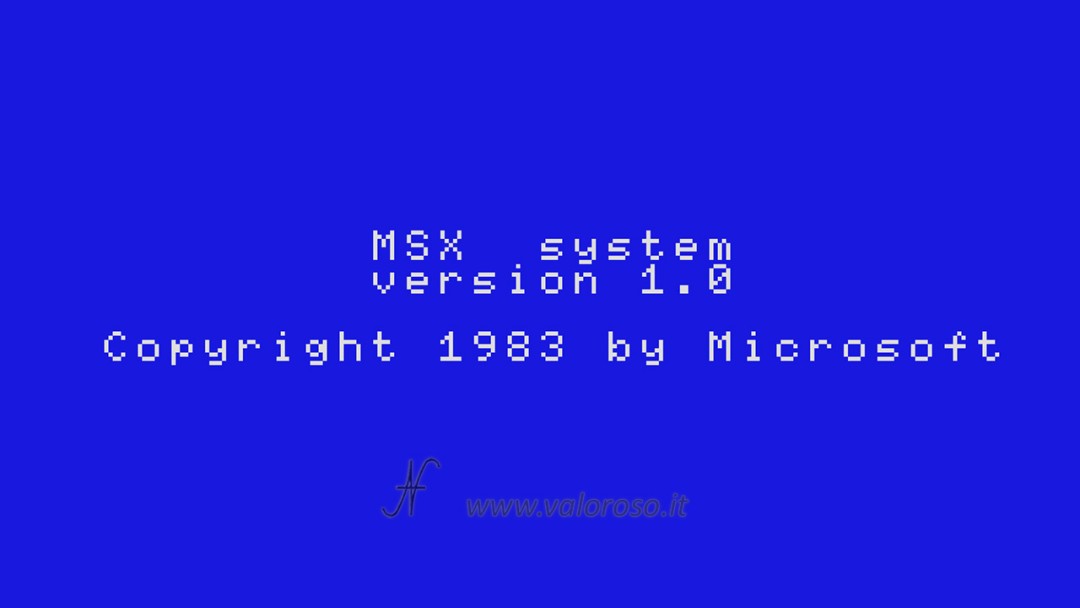
The next boot screen shows the MSX BASIC language version (1.0) and the indication of the bytes of RAM available for programming (28815 bytes free). MSX BASIC is from Microsoft.
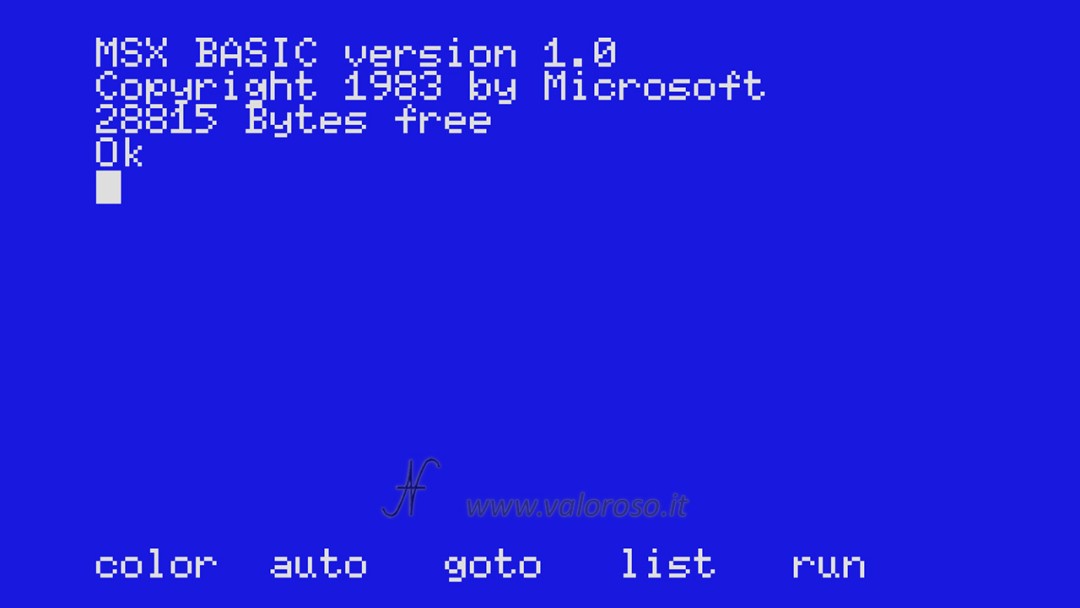
Technical characteristics of the Philips VG-8020 MSX
CPU: Zilog Z80A, 8-bit, 3.576 MHz

ROM: 32 KB
RAM: 64KB (+16KB video separate RAM)
Graphics: V.D.P. Video Display Processor, TMS9929A
Text mode: 40 columns x 24 rows or 32 columns x 24 rows

Graphics mode: 64 × 48 pixels and 256 x 192 pixels (16 colors)
Audio: P.S.G. Programmable Sound Generator, YM-2149
Keyboard: QWERTY 73 keys, includes arrows and function keys
Software included in ROM: MSX BASIC version 1.0 by Microsoft

Expansion ports:
- Parallel (Centronics 14 poles)
- Tape drive (DIN 8-pin)
- Audio/Video (DIN 8 poles)
- RF Audio/Video, for PAL analog TV, channel 36
- N. 2 x 50-pin cartridge connectors (at the top of the computer, with door)
- N. 2 DB9 connectors for controller, joystick, mouse (on the front of the computer)

On the right side of the computer is the power switch.
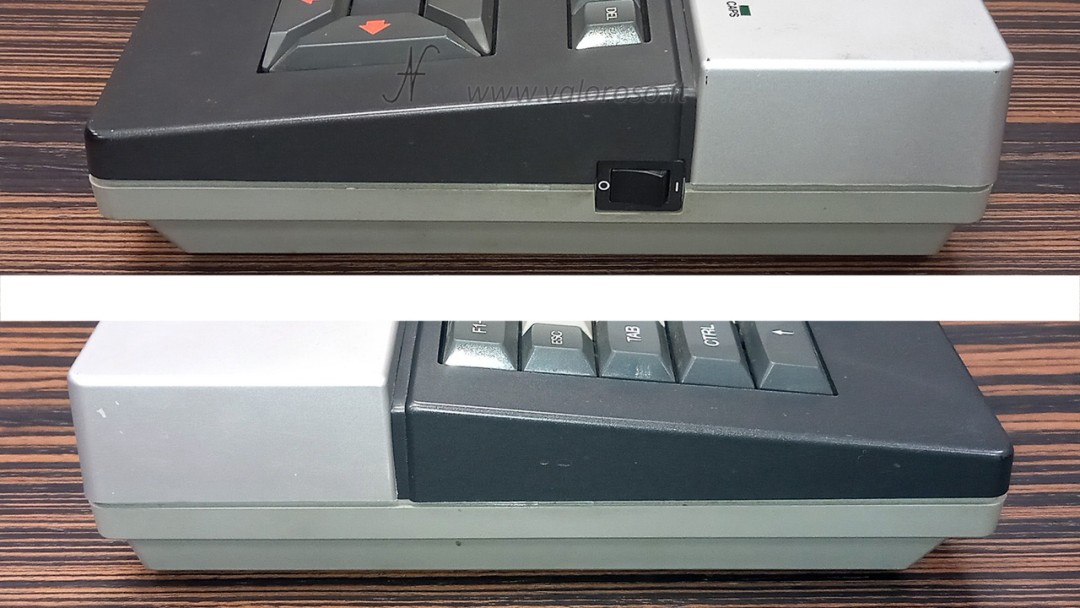
Emulate MSX computers
The Philips VG8020 home computer, as well as other MSX computer models, can be emulated with the fMSX emulator, for Windows, Linux, Android, ...
Philips VG8020 MSX power supply
The power supply of the Philips VG8020 MSX home computer is internal. A power cord with a two-pole connector type C7 is connected to the computer. The computer is powered by 220 V, 50 Hz alternating current, and draws 24 W.
Papers
1. Philips VG8020 installation manual (multilanguage)
2. Philips VG8020 service manual
3. Manuale MSX-BASIC by Sickler (ITA)
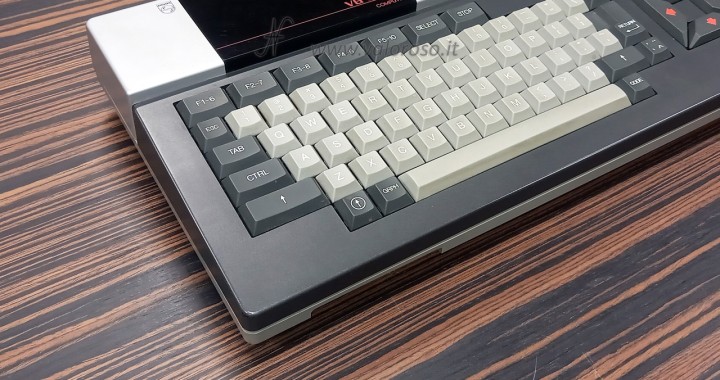
Hello, a question. The key next to the right schift, the one that shows the quotes, the double quotes what function does it have? I tried two msx with the keyboard working but on both that key does not work
HI! Take a look at the “installation manual” at the bottom of this page. It's written like this:
This key is used to accent over a character.
Examples:
To add an accent (') above a character, press the accent key first.
At this point, no accent is played on the screen yet.
Then pressing the button corresponding to the character to be reproduced with the aforementioned accent, then the complete character with the relative accent appears on the screen.
To use the accent('), first press the button corresponding to the acanthus at the same time as the SHIFT button.
To get an accent (^) on a character, press the accent key first, then press the CODE key, then follow the same procedure. To obtain the accent(") the same procedure is always followed, with the exception that in this case the CODE, SHIFT and accent keys must be pressed at the same time.
These accents can only be used in combination with vowels.